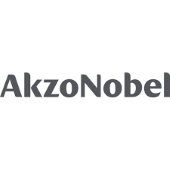|   |
|
ABSTRACT
Can Standardization AND Continuous Improvement Practices Build a Quality Culture?Industry: All Industries Keywords: Continuous Improvement, Culture, Communication Level: All Levels LinkedIn: https;//www.linkedin.com/in/danmessina When I was a somewhat younger man, I worked for a regional distributor of industrial automation products. During the onboarding process, I was introduced to a network drive that housed, among other things, work instructions. These documents varied in scope and complexity from processing a return to issuing a credit memo to inventory adjustments. My trainer explained if I had any questions about how to perform my job, I should look here first to see if a document existed to help me. The practice of providing work instructions in a manufacturing or assembly process is not new but what this company did was to operationalize office and sales staff in manner that ensured quality, standardization, and self- service. We’ve all worked at companies that get it wrong so when a company gets it right, they stand apart. By providing the work instructions for such routine tasks in, say, sales operations, they ensured three very important things:
When my children were young, I would read to them each night before bed. One story they liked, was called Petunia the Silly Goose. The story follows an anthropomorphic goose on an American farm with a cast of characters that included a wide array of the usual farm story animals, horses, cows, chickens and so on. One day, while Petunia was roaming around the yard, the farmer’s son in a rush to catch the school bus dropped a book. Petunia picked it up and placed it under her wing feeling, somehow, a little smarter. The other farm animals noticed that she looked a little smarter and started asking her advice which led to disastrous consequences. The story ends with Petunia dropping the book so the pages were open leading the realization she couldn’t read any of the words. The moral of the story is that simply having access to knowledge doesn’t make one wise. Not exactly literature but an important point, nonetheless. As quality and continuous improvement professionals, we strive to provide our colleagues with access to knowledge but does access alone create what we’re after – a quality culture? Before we answer that, we’ll use this session to talk about the word culture – what it means, how we use it or, more to the point, how we misuse it and why it’s so elusive.
|
BIOGRAPHY
Daniel MessinaContinuous Improvement Leader, ABB, Inc., Kansas City, MO, USA Daniel Messina is the quintessential square peg in a round hole. Coming to continuous improvement after a career in the diagnosis and repair of highly complex automated systems, he honed his skills for problem solving in some of the most inhospitable and high-pressure conditions imaginable. Eventually moving into the sale of automated systems and connected services, Daniel mastered the skill of conversation with clients leading to successful outcomes for all. This varied career provides Daniel with a diverse perspective for problem solving and communication methods. |
























































